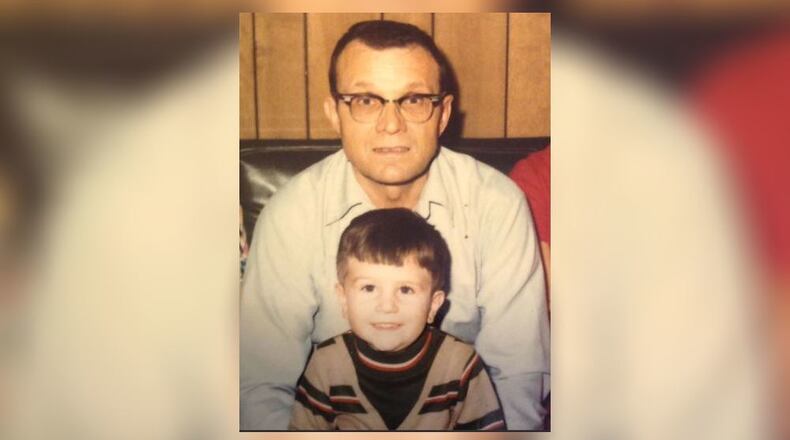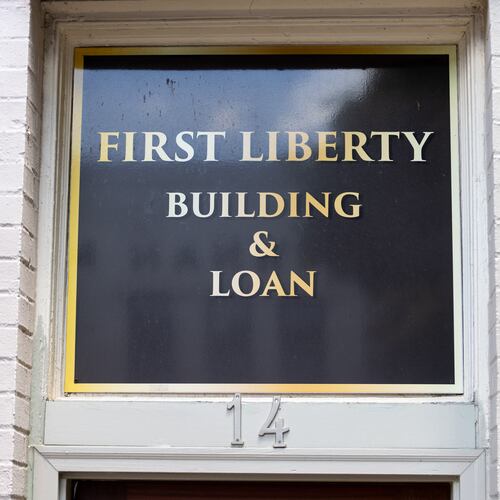My fondest memories of my grandfather, Keith Dooley, involved him hitting fly balls to me in his backyard in Chatsworth. I’d stand just at the edge of the garden, ready to sidestep the corn and green beans if needed in order to snag a deep one.
In most cases, it was Sunday afternoon and we’d just finished having lunch. And if we hadn’t chosen baseball that day, the lineup might have included a walk to the barn or to the back of his property, or maybe we’d have listened to the Braves game on the radio.
During those years, I wasn’t aware of his service in World War II other than what I heard on the periphery. It might have come up every now and then, and maybe I recall a reference to the Philippines or to New Guinea, but he likely wasn’t the one who brought up the subject.
As my grandmother Maggie, who’s now 98, told me recently, “He didn’t talk about it.”
In preparation for this special project, I had my mother (who was 2 when grandpa was drafted in 1943) start looking through my grandmother’s house for anything that might shed more light on his service in the U.S. Army. My father had mentioned that Keith spoke occasionally about being part of a motor pool while in the Pacific theater, that he often drove officers to their destinations, including once to the execution of a Japanese officer.
When we found my grandfather’s papers from Fort McPherson in an old envelope, we discovered he was inducted at the age of 29 on Dec. 15, 1943; he was designated a Truck Driver Light 345; his serial number was 34833375; and he was honorably discharged April 18, 1946.
Among those papers were notes about his post-war insurance (the premium was $7.10 per month), his mustering-out pay ($872.44) and a letter that warned returning veterans about the dangers of carrying too much money in Atlanta. It listed his occupation at the time as a sewing machine operator, something he did after stints in CCC camps (Civilian Conservation Corps) in South Carolina and Oregon – part of President Franklin D. Roosevelt’s New Deal to aid the unemployed during the depression.
When we looked even further, we actually found his uniform, a wool-like garment that I can’t believe he had to wear in the heat. Among a few photos of himself and his three brothers, all in uniform, we found a group photo of “Casual Company,” with him smiling on the front row. Unfortunately, no names were listed.
We also came across some postcards and photos from the Philippines and New Guinea that he had sent Maggie, plus an old photograph of a ship that appeared in the Chatsworth newspaper in the 1960s. My grandmother kept it in one of her Bibles because the USS General Harry Taylor was the ship that transported Keith from San Francisco to the small island of New Caledonia in the South Pacific in October 1944. She also had noted that he spent the months prior to that training at Camp Shelby in Mississippi and Camp Beale in California.
His discharge papers stated that he departed the Pacific on March 27, 1946, and didn’t arrive back in the U.S. until April 11. Maggie is not sure how he got back to Georgia from California; we know it took him seven more days to arrive home.
When I asked Maggie what she remembered about that experience, she relayed this story. Keith had a two-hour bus ride from Fort McPherson to Dalton, then started walking home since he had no way to tell family members he had returned. Along the way, a local man stopped, asked him where he was going and offered to drive him the rest of the way.
My grandpa’s active service ended after two years, four months and four days, according to the official paperwork. He was 32, much older than most of the privates he served with.
After he worked for years in numerous post-war jobs (raising chickens, making rugs), he took a position during retirement with the U.S. Forest Service. His job? Driving a truck.
He died in 1988 of cancer when I was in college. But because of this special project and the mementos he left behind, I feel I know him just a bit better today.
About the Author
Keep Reading
The Latest
Featured



